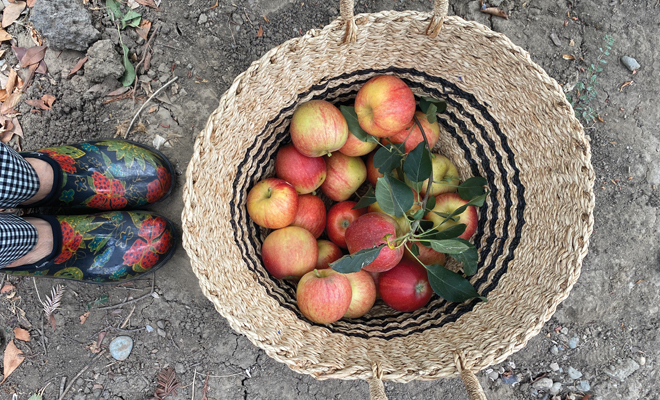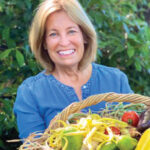 Laurie Eager
Laurie Eager
Luscious Fruit: Fall’s Apple Crop
I love to drive through the apple orchards in the early spring. The clouds of pale pink blossoms and buzzing bees are a welcome harbinger of the harvest to come. By late July, I’m ready to bite into a crunchy, sweet Gala from our tree that grows out back. As summer gives way to fall, my thoughts turn to baking and I start craving an apple crisp with lots of cinnamon and a scoop of vanilla ice cream. In addition to the local apples, grocery stores stock many varieties. So, try a few different ones and discover your own favorite. Apples are good and good for you!
While the adage “An apple a day keeps the doctor away” may not be entirely true, apples do have significant health benefits. Apples, which are the most widely consumed fruit globally, are a nutrient-dense food. They are rich in soluble fiber, which can lower cholesterol, and in polyphenols, which are antioxidants linked with a decrease in blood pressure and stroke risk. A medium-sized apple contains approximately 100 calories with a high water content, so consuming one makes you feel full. They’re also low in fat and sodium. Apples make a delicious and healthy snack!
California is one of the top six apple-producing states in the country, and the San Joaquin Valley, with its Delta breeze, is the leading apple-growing region in the state. Farmers here are able to offer the first fresh apples of the season. The fruit is dependent on a winter chill, thus in our area the following varieties are the most successful.
Gala
These are the first apples to ripen. Originally from New Zealand, they are sweet and fruity with a crisp texture and delightful scent.
Fuji
Fuji apples originated in Japan and have a high sugar content. They are a large, round apple with striping through their golden-red skin. Fuji apples are suitable for eating and baking and hold up well in storage.
Granny Smith
These bright-green-skinned apples are both sweet and tart and are a favorite of bakers. They can keep in storage without refrigeration for several months.
Cripps Pink Lady
This crunchy, pink-skinned variety is sweet and slightly tart with a dense white interior. They are a great choice to tuck in a school lunch box.
According to the guidelines in the University of California Department of Agriculture and Natural Resources, the best time to plant apple trees is from January to March. Shop for them early in bare-root form, or later, planted in a nursery container. If you choose a bare-root tree, be sure the trunk size is between 1/2 to 5/8 inches in diameter and that the roots are straight and healthy with no sign of disease. If you opt for a container plant, look for one that shows vigorous grown and dark green color. Ideally, branches should be fairly low to the ground so that the fruit will be easy to pick.
By: Laurie Eager
Laurie Eager is the author and illustrator of In Papa’s Garden. A seeker of beauty every day, she works part time as an interior designer, loves adventure travel, all things French and dark chocolate. She lives in Stockton with her husband, Steve, and can be found most mornings enjoying a cup of coffee and the first rays of sunshine in their abundant vegetable garden.








